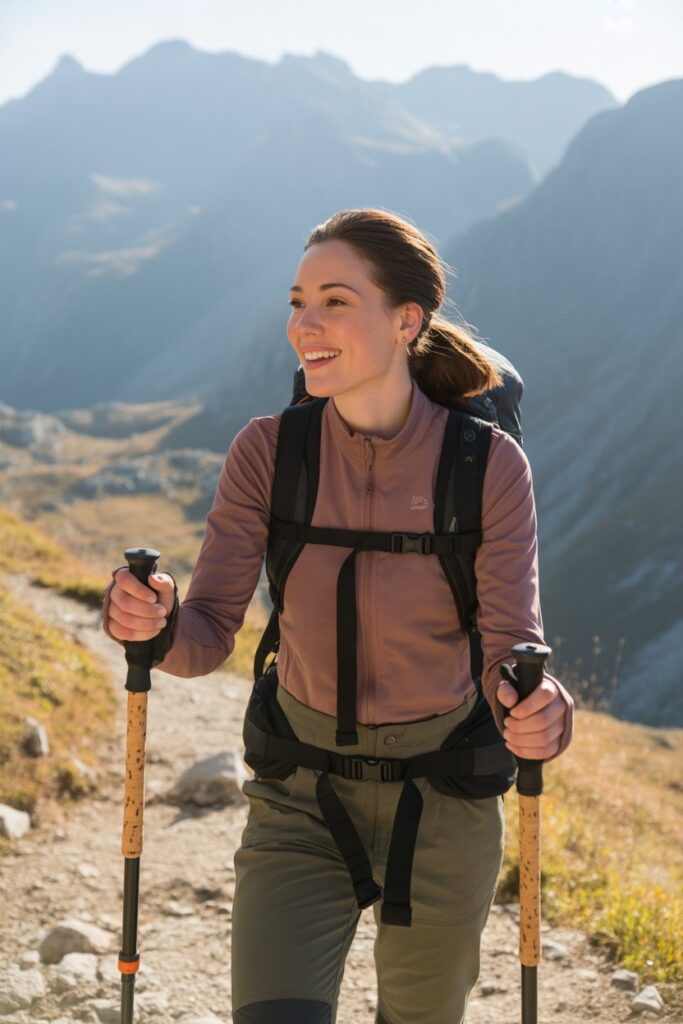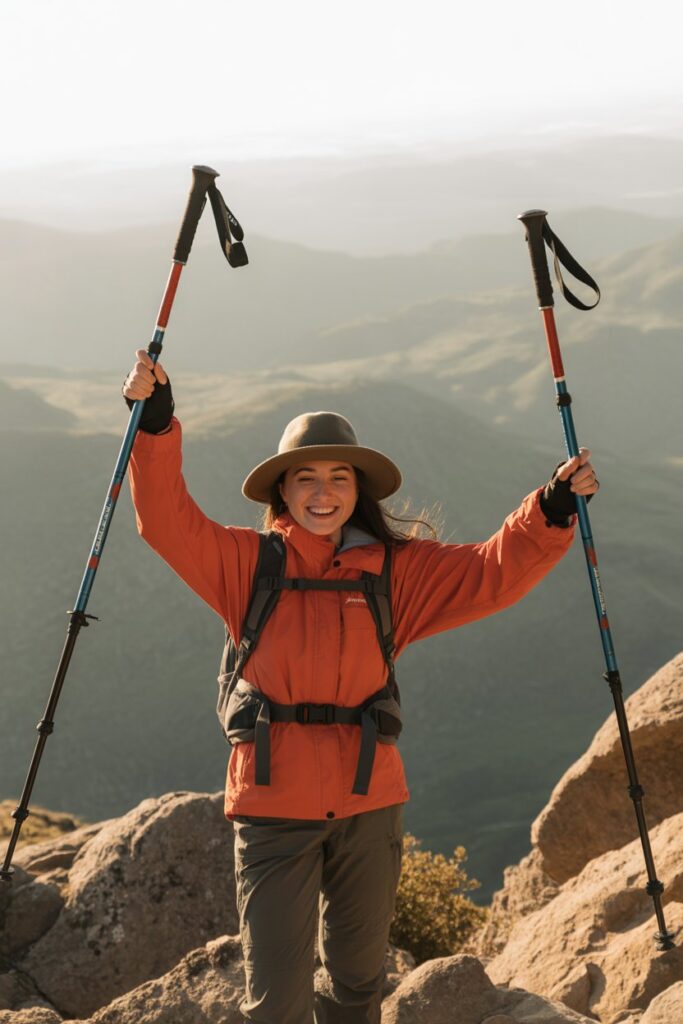If you’ve ever passed someone on the trail swinging a pair of trekking poles and thought, “That looks a bit extra” — you’re not alone. Many hikers skip them, thinking they’re only for hardcore mountaineers or people recovering from knee surgery. But here’s the truth: trekking poles aren’t just fancy walking sticks. They’re one of the most underrated pieces of hiking gear you can own.
Once you understand what they actually do, it’s hard to imagine hiking without them. They help you keep your balance on rocky paths, save your knees on long descents, and even give you a little speed boost uphill. Think of them as your personal four-wheel-drive system — except you still get to look cool while using them.
What Do Trekking Poles Actually Do?
So, what do trekking poles do? In short: a lot more than you think. They improve stability, take some of the load off your lower body, and give your upper body a role in the adventure. And if you pick the right pair, they’ll work just as well for a quick local trail as they do for a multi-day backpacking trip.
They’re especially handy in tricky conditions — think mud, snow, slippery rocks, or uneven forest floors. By adding two extra contact points with the ground, trekking poles make you more confident in each step. And confidence on the trail? That means fewer stumbles, less strain, and more energy to enjoy the views.
Why You Might Want Trekking Poles for Your Next Hike
Even if you’re not planning a big backpacking adventure, trekking poles can make your hikes more enjoyable. Going downhill? They reduce knee strain by shifting some weight to your arms. Climbing uphill? They give you extra push power and help keep your rhythm.
And here’s the bonus: trekking poles aren’t just for rugged mountain hikes. They work just as well for mellow forest trails, long-distance walking, or even as part of your fitness routine. If you’re curious about proper technique, check out our guide on how to use trekking poles so you can get the most out of them from day one.
Key Benefits of Trekking Poles
Let’s get straight to the point — trekking poles aren’t just a “nice-to-have”. They can transform the way your body feels during and after a hike.
Here’s what they bring to the trail:
- Better balance on uneven terrain – Extra contact points with the ground mean fewer slips and stumbles.
- Reduced knee and joint strain – Especially noticeable on long downhill sections.
- Extra push uphill – Engage your arms and shoulders to share the workload.
- Improved posture – Staying upright helps you breathe easier and keeps your back happy.
- Safety in tricky conditions – Mud, snow, or icy patches become much less intimidating.
If you’ve ever ended a hike thinking, “My legs feel like jelly”, trekking poles might just be your new best friends.
When to Use Trekking Poles
You don’t need to bring trekking poles on every single walk to the park — but for certain trails and conditions, they’re worth their weight in gold.
- Mountain hikes – Steep climbs and descents are much easier with poles.
- Muddy or snowy trails – More traction and stability.
- Multi-day backpacking trips – Help you manage the extra load of a heavy pack.
- River or stream crossings – Support and stability when water hides slippery rocks.
- Fitness walking – Keep a strong pace on flat or rolling terrain.
Think of them as a flexible tool you can use when the trail demands it.
How to Choose Hiking Poles
Now that you know why they’re useful, let’s figure out how to pick the right pair for you.
Material
- Carbon fiber – Ultra-light, stiff, and great for reducing arm fatigue. Downsides? They can snap under extreme force and cost more.
- Aluminum – Slightly heavier, but more durable and usually cheaper. A great all-rounder.
Adjustability
- Telescoping poles – Easy to adjust for different terrains and user heights.
- Folding poles – Compact and ideal for travel or minimal storage space.
Grips
- Cork – Molds to your hand over time and manages sweat well.
- Foam – Light, soft, and perfect for warm weather hikes.
- Rubber – Durable and insulating, great for cold or wet weather.
Locking Mechanism
- Lever lock – Quick to adjust, even with gloves on.
- Twist lock – Slimmer profile but can be trickier to use with cold hands.
Pole Length & Adjustment Tips
Getting the right pole length is key to comfort and efficiency.
Basic rule: when your pole tips are on the ground, your elbows should be at about a 90-degree angle.
- Uphill – Shorten poles slightly to keep your rhythm and avoid overreaching.
- Downhill – Lengthen poles to improve stability and protect your knees.
- Flat terrain – Stick to your standard length for consistent posture.
Common Mistakes When Using Trekking Poles
Even the best gear won’t help much if you’re using it wrong. Here are some common slip-ups:
- Incorrect height – Causes strain in your shoulders or arms.
- Ignoring the straps – Proper strap use takes pressure off your hands and wrists.
- Gripping too tightly – Leads to fatigue and blisters.
- Not adapting to terrain – Keep adjusting length for changing conditions.
Avoid these, and you’ll get way more out of your poles.
Extra Tips for Beginners
If you’re new to trekking poles, a little prep can make a big difference:
- Try them on a short, familiar trail before a big hike.
- Experiment with different tips (rubber caps, snow baskets) depending on terrain.
- Practice using the straps so you can relax your grip without dropping a pole.
- When traveling, fold or collapse them and store in checked luggage if flying.
Care & Maintenance
Like any good piece of gear, trekking poles will last longer with regular care:
- Wipe them down after each hike, especially if muddy or wet.
- Let them dry before storing to prevent mold or corrosion.
- Check the tips regularly and replace when worn down.
Bringing It All Together
Trekking poles do a lot more than most hikers realize. They keep you steady, protect your joints, and make your hikes more enjoyable.
Whether you go for lightweight carbon or tough aluminum, folding or telescoping, cork or foam grips — the best hiking poles are the ones that fit your style, terrain, and budget.
If you’re ready to upgrade your hikes, take a look at our Best Trekking Poles for Women 2025 Guide for trail-tested picks you can trust.


